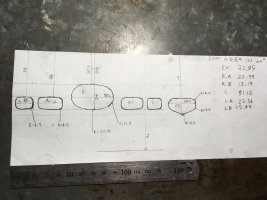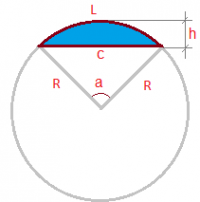Hello, I am very uncomfortable with this math problem. So I have calculated the area of ports in a cylinder by tracing them on paper while in the bore. This has given me the cordal area. How can I calculate the actual area? Please help. 
The cylinder diameter is 55.50mm
On the picture:
L - arc length
h- height
c- chord
R- radius
a- angle
Area:
 [1]
[1]
Arc length:

Chord length:

Segment height:


The cylinder diameter is 55.50mm
On the picture:
L - arc length
h- height
c- chord
R- radius
a- angle
Area:
Arc length:
Chord length:
Segment height:
Attachments
Last edited:

